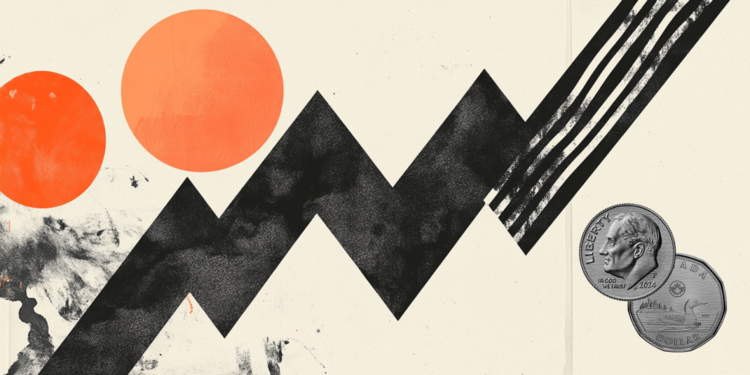- The US Dollar extends its recovery for the second consecutive day, supported by strong US data.
- Upbeat US business activity and Jobless Claims support the Fed’s “wait and see” rhetoric.
- In Canada, the weak Retail Sales data keep hopes for a BoC rate cut alive.
The US Dollar is rallying for the second day in a row against a weaker Canadian Dollar. The strong US business activity and Jobless claims figures have given further reasons to the Fed to keep rates on hold next week, which has sent US Yields and the US Dollar higher.
The pair is trading at 1.3670 at the time of writing after having hit an intra-day high at 1.3780 earlier today. The broader trend remains bearish with the weekly chart showing a nearly 0.3% decline, but the higher lows posted over the last few weeks suggest that the pair might have found a bottom.
Hopes of a hawkish Fed are supporting the USD
The fundamental context has turned moderately USD supportive. US data released on Thursday showed a larger-than-expected improvement in the services sector, which offset the unexpected contraction in manufacturing activity.
Beyond that, weekly Jobless claims fell for the sixth consecutive week last week, confirming that the labour market remains resilient, and backing the views that the Fed will stand pat at next week’s meeting. The USD/CAD has rallied more than 0.4% following Thursday’s data.
The Bank of Canada is also meeting next week, and a further rate cut, although unlikely, has not been completely discarded, and June’s Retail Sales figures did little to dissipate those views. Retail sales declined by 1.1% in May, in line with the market forecasts, following a 0.3% increase in April.
Fed FAQs
Monetary policy in the US is shaped by the Federal Reserve (Fed). The Fed has two mandates: to achieve price stability and foster full employment. Its primary tool to achieve these goals is by adjusting interest rates.
When prices are rising too quickly and inflation is above the Fed’s 2% target, it raises interest rates, increasing borrowing costs throughout the economy. This results in a stronger US Dollar (USD) as it makes the US a more attractive place for international investors to park their money.
When inflation falls below 2% or the Unemployment Rate is too high, the Fed may lower interest rates to encourage borrowing, which weighs on the Greenback.
The Federal Reserve (Fed) holds eight policy meetings a year, where the Federal Open Market Committee (FOMC) assesses economic conditions and makes monetary policy decisions.
The FOMC is attended by twelve Fed officials – the seven members of the Board of Governors, the president of the Federal Reserve Bank of New York, and four of the remaining eleven regional Reserve Bank presidents, who serve one-year terms on a rotating basis.
In extreme situations, the Federal Reserve may resort to a policy named Quantitative Easing (QE). QE is the process by which the Fed substantially increases the flow of credit in a stuck financial system.
It is a non-standard policy measure used during crises or when inflation is extremely low. It was the Fed’s weapon of choice during the Great Financial Crisis in 2008. It involves the Fed printing more Dollars and using them to buy high grade bonds from financial institutions. QE usually weakens the US Dollar.
Quantitative tightening (QT) is the reverse process of QE, whereby the Federal Reserve stops buying bonds from financial institutions and does not reinvest the principal from the bonds it holds maturing, to purchase new bonds. It is usually positive for the value of the US Dollar.

